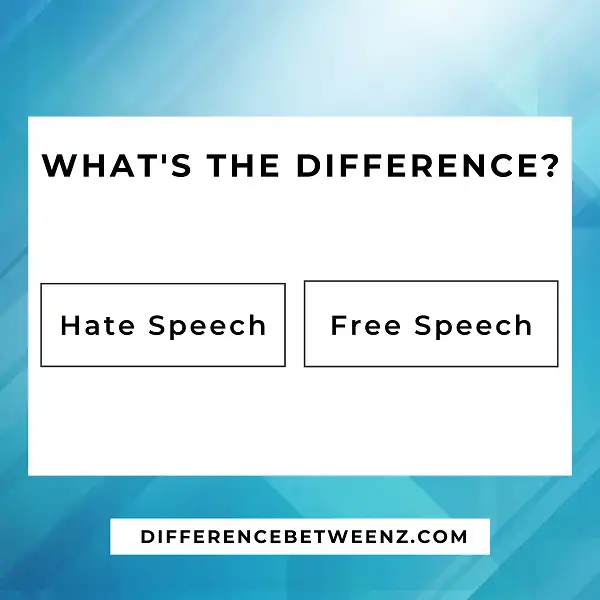In today’s ever-evolving digital world, the concept of free speech is one that has been greatly debated and often misunderstood. In some cases, it can be difficult to differentiate between hate speech and legitimate forms of expression. So what exactly is the difference between hate speech and free speech?
Free Speech rights are protected under the First Amendment while Hate Speech refers to actions that could cause emotional distress or violence towards certain individuals or groups based on their religious beliefs, race, sexual orientation, or other personal characteristics. This blog post will explore these two concepts in greater detail and provide insight into how we can handle this delicate balance between protecting our fundamental right to free expression and curbing those who use language that seeks to target vulnerable populations for harm.
What is Hate Speech?
Hate speech is an umbrella term that covers a wide range of offensive and potentially harmful words, images, or actions that are rooted in discrimination. Hate speech is typically characterized by a form of victimization based on categories such as gender, race, religion, ethnicity, nationality, sexual orientation, or any other protected characteristic.
Hate speech carries the underlying sentiment of hate, hostility, and dominion over vulnerable groups; it can be expressed verbally or through physical violence. It has no place in society and should be actively challenged whenever it is encountered. Taking a stand against hate speech is one way to create an inclusive environment for people of all backgrounds and identities.
What is Free Speech?
Free Speech is a fundamental right that is essential to any democratic society or institution. It gives us the ability to openly express our opinions, beliefs, and values without fear. Free Speech enables us to challenge ideas and allows for dynamic debate and dialogue between citizens of a nation or institution.
Free Speech encourages diversity in thought amongst citizens, which helps foster creativity, critical thinking, and external scrutiny of established systems and institutions. Free Speech holds the power to empower individuals, bridge divides amongst people, protect minority voices, and ultimately shape the future of society.
Difference between Hate Speech and Free Speech
Hate speech is a term that does not have an exact definition, as it varies depending on the circumstance. At its core, hate speech is defined as any type of communication that intends to offend or injure another person based on characteristics such as race, gender, and sexual orientation. Hate speech can cause serious harm for both individuals and larger communities.
Free speech, on the other hand, allows people to express their thoughts and opinions without repression from the government or any other governing bodies. It’s worth noting that while free speech gives people the right to speak freely without fear of censorship or punishment, it still doesn’t protect hateful language spoken with malicious intent. This fundamental difference between Hate Speech and Free Speech should be taken into consideration when engaging in discourse.
Conclusion
It is important to understand the difference between hate speech and free speech. Free speech is protected under the First Amendment of the United States Constitution. Hate speech is not protected under the First Amendment and can be regulated by government officials. There are three types of hate speech: fighting words, true threats, and incitement to imminent lawless action.
Fighting words are considered to be slurs or other words that attack a person based on race, gender, religion, or ethnicity. True threats are defined as statements made with the intention of causing fear or bodily harm to another person. Incitement to imminent lawless action is when someone speaks with the intent to cause a crowd to become violent.


